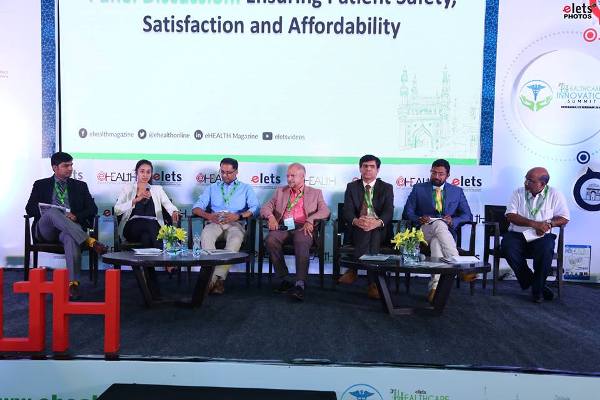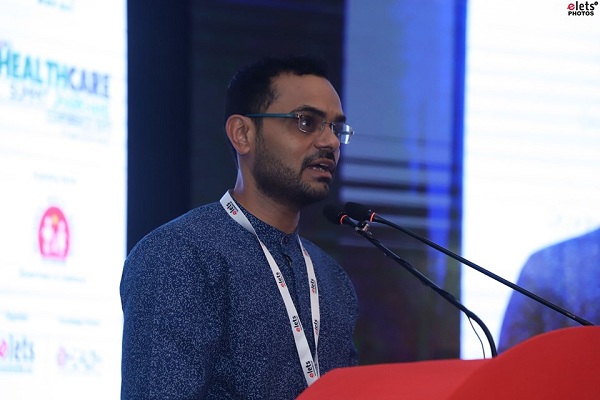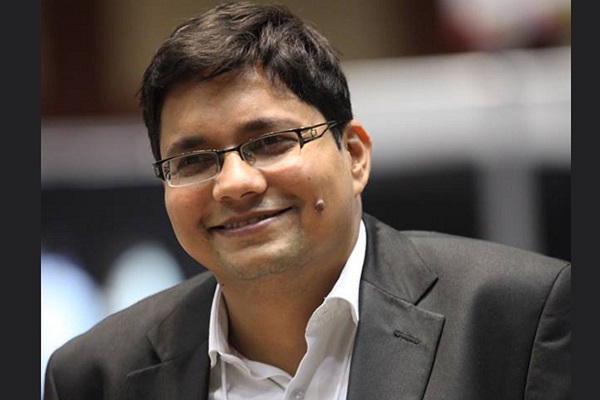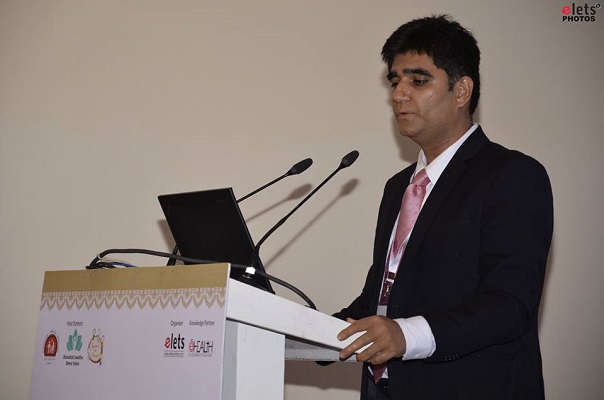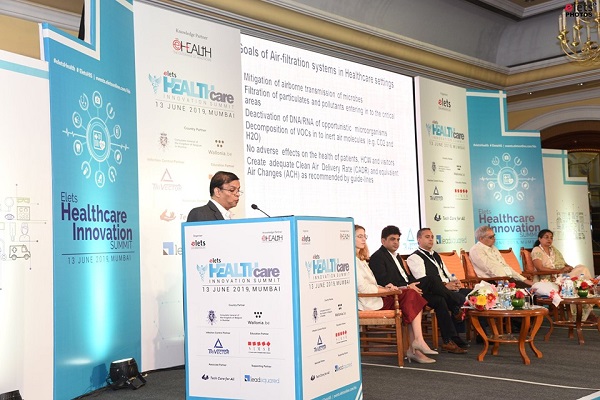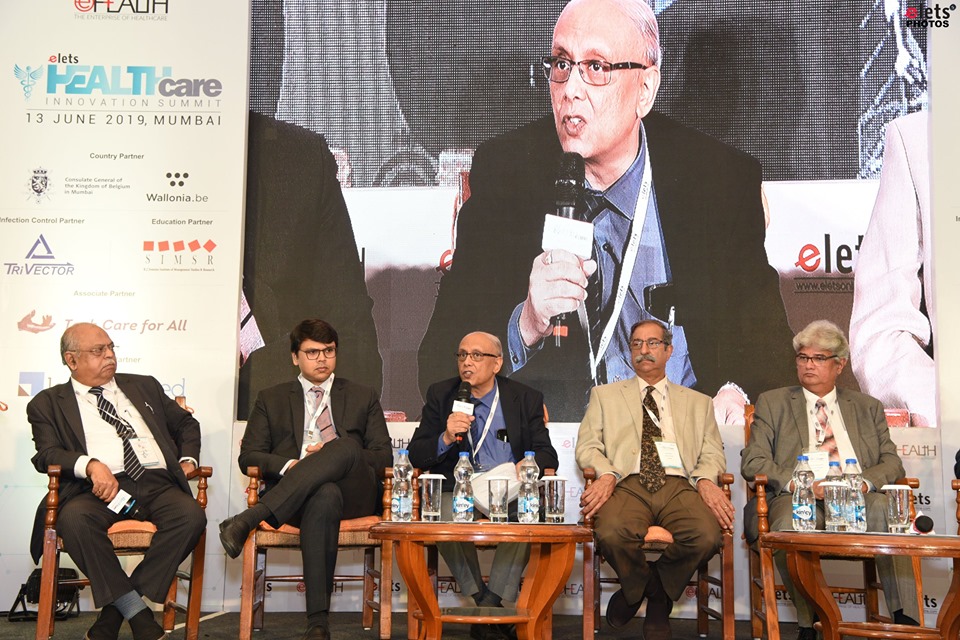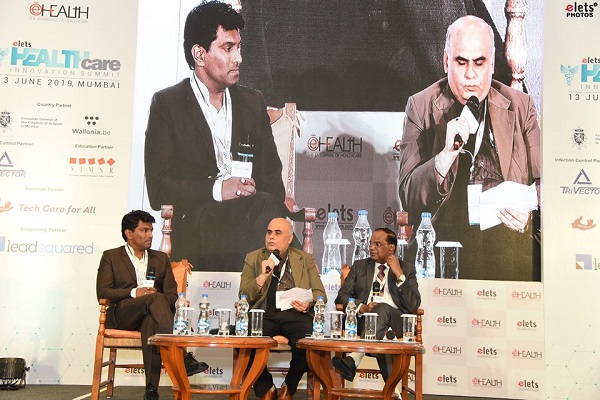Elets Exclusive! The healthcare scenario has changed and so has patients’ expectations, opine experts
Patient safety is one of the major challenges of the 21st century. Medical errors are leading cause of deaths in India. Patient safety and medical error seems to be double edged swords in the current healthcare scenario. Safety and error are the two arms of the individual, with one arm he makes the mistake and with another arm he set it right. Innovation and technology can save lives and improve the quality of care on other hand it introduces the complexities and risk element if used unsafely.
Talking about ensuring Patient Safety, Satisfaction and Affordability, at Healthcare Innovation Summit Hyderabad, eminent panelists shared their insights on the current healthcare scenario. Dr. Sai Praveen Haranath, Medical Director, Apollo eACCESS TelelCU Service, Hyderabad said, “The United States and United Kingdom are working on one in million errors prevention concept while in India we are trying to prevent one in thousands errors. Cost of care goes up when we move from one in thousand errors to one in billion, because you need many more safeguards, training and regulations. Fortunately, modern-day technologies have overcome many barriers in healthcare. We provide teleICU services, enabling patients to access intensive care services from far off places.”

Commenting on the same, Dr. Priti Challa, Managing Director, Challa Hospital, Hyderabad said, “The Government should come up with a regulatory body to monitor the steep rise in medical cost. Affordability factors from patients’ point of view should be taken into account. Just because you increase the volume of the patients, you can’t reduce the cost of care being given to patients. There has to be a threshold. We all should work towards providing patients affordable and good quality medical facilities.”

Shedding light on the relationship between a patient’s satisfaction and affordability, Dr. Tausif Thangalvadi, Medical Director, Premier Hospitals, Hyderabad said, “The common assumption is that patient’s satisfaction and affordability go hand-in-hand but in reality it depends on many factors such as affordability, staff behavior, and what is their access to services. Studies have shown that the best way to improve patients’ safety and satisfaction is by improving nurse to patient ratio. Rather than patient satisfaction, it is patient engagement that is the guiding principle today.”
Dr. Mohammed Noor Ahmed, COO, Virinchi Hospitals, Hyderabad said, “Medical profession has moved from a noble profession to service industry. Now, it is further moving to experienced service industry. Patients don’t bother about the kind of services you provide to them as they already carry experience with them. It’s a matter of little worry for service providers. If patients carry good experience about standard of care being provided to them, they will be your fan; otherwise they will be villain to you.”

Girish Bommakanti, CEO, Gleneagles Global Hospitals, Hyderabad said, “Patients’ safety, satisfaction and affordability should be viewed from three angles physical, people and processes. Adoption of EMR is must. Data Central and State Government schemes) should be analysed which provides insight about cost-effective treatment. Shared services model could be an effective too in the direction of making healthcare affordable. Turn-around time is one of the important areas which makes patient really happy.”

Dr. Radha Krishna Rao Sagi, Medical Director, Prathima Hospitals, Hyderabad said, “Prathima Hospitals caters to every kind of patient. Quality of services doesn’t get affected with their paying capacity. Payers’ profiles are changing as the Central Government and State Governments have come up with number of schemes nowadays. A part of affordability is being taken care by the Government and quality. Patients served under Aarogyasri Scheme get same quality services as others at our hospital.
“Health scenario has changed so has patients’ expectations. Health cost can be managed if there is stratification of care given. There is no stratification in majority of care given. Around 80 percent of healthcare providers including primary, district hospitals and referral medical colleges. Insurance is playing a major role, enabling some people to pay more at bigger hospitals. Categorisation of patient care as level one two and there is needed”, concluded Dr. Vijay Sekhar Reddy, Medical Director, Bloom Hospitals, Hyderabad.
post_id:uld_count:
Cookie not set
Value 1: 0
Value 2: 10




